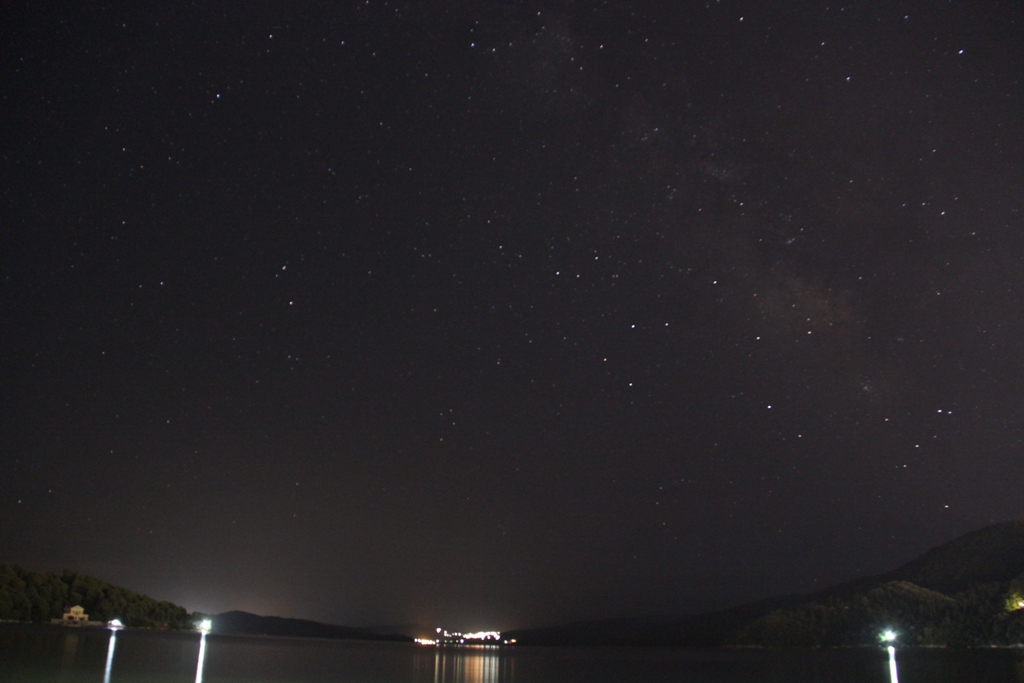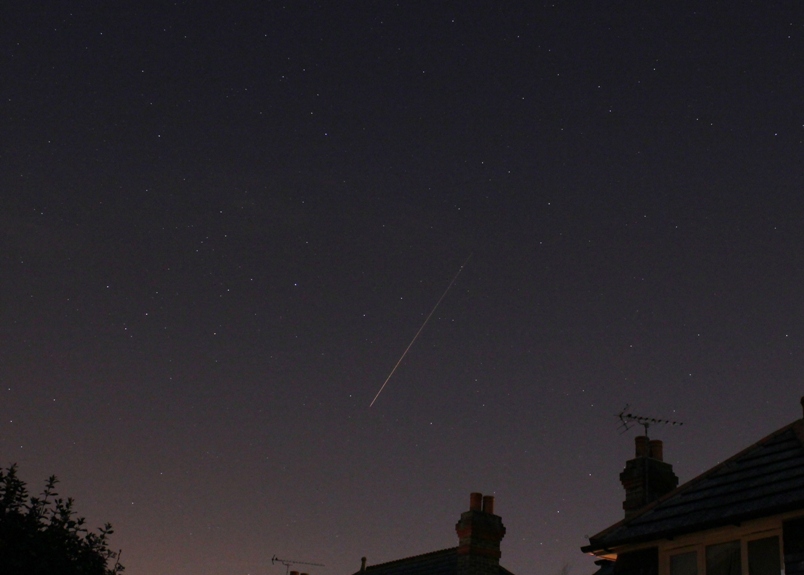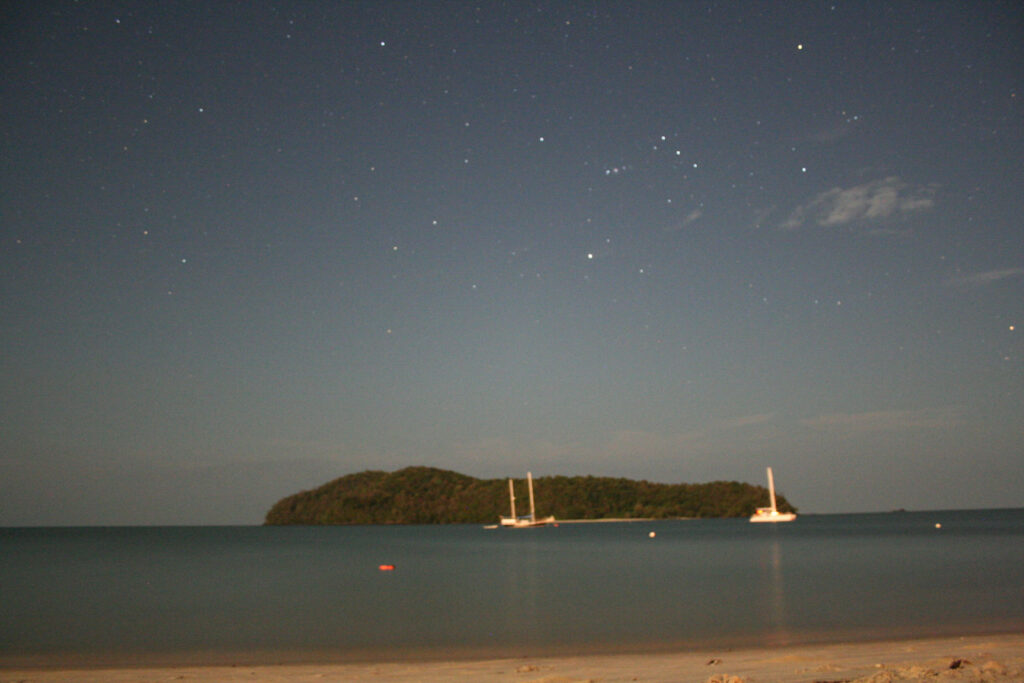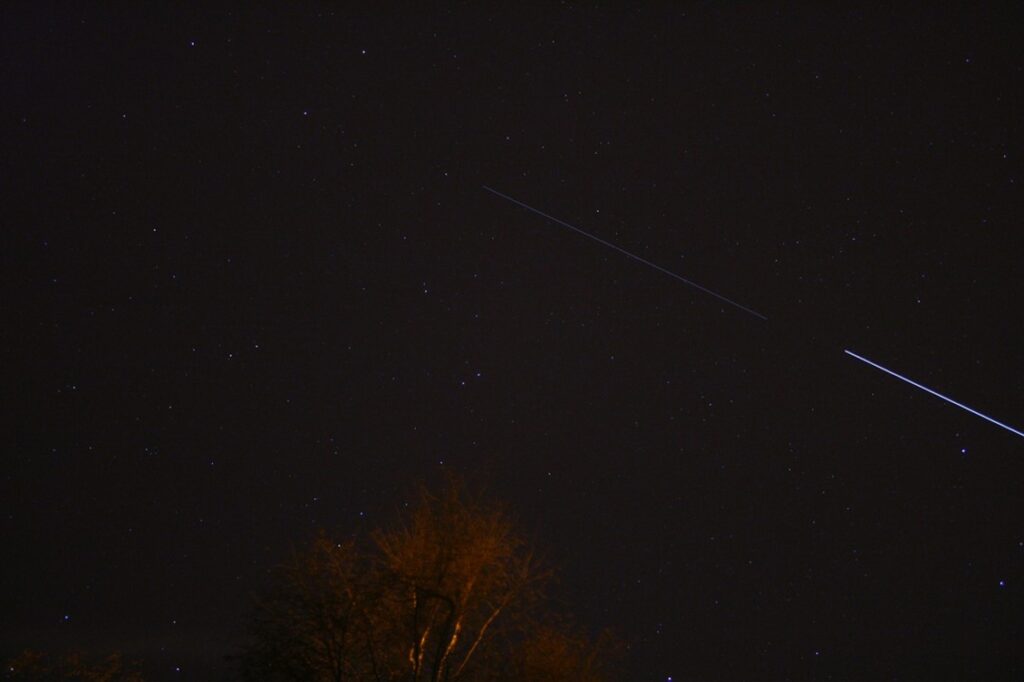Astrophotography with a DSLR camera
Our February meeting didn’t sound as if it would be a great success. We had known some time ago that the original speaker had postponed. Now we learnt that the replacement speaker had withdrawn because of flu – and even the kitchen urn wasn’t available. Step up to the plate, Danny Thomas, to turn a potential disaster into a very interesting session. Danny has over the past few years developed a fantastic expertise in astrophotography with a DSLR (Digital Single Lens Reflex) camera and also has a growing renown with local photography groups who keep booking him for talks on the topic.
His talk was based around some wonderful and varied images, with a mass of technical data too. You can find a summary of this information by clicking here. Here are two images to whet your appetite. (Note : details on all the images may be clearer if you click on the image to enlarge)


Image Credit: Danny Thomas
The minimum requirements for this style of astrophotography are disarmingly simple (which is not the same as cheap!) – a DSLR camera and a tripod. Having said that, it is vital that the camera has key features. You must be able to turn off the flash, set the exposure time up to 30 seconds, have a manual focus, be able to set the ISO value, (generally ISO 400 is the slowest setting you might need) and your camera must have a cable release. The other main requirement of course is a clear sky and here the DSLR has an advantage over more sophisticated forms of astrophotography. It is quick to set up and you might get some good images before the clouds roll in. It is though still vulnerable to the other optical problems such as condensation.
A few top tips from Danny
The image can be more aesthetically pleasing if it has some foreground detail, so choose your location accordingly. If you are doing this on holiday, check out the location in daylight. If it is a beach, beware of the tides and expect the unexpected. One beach in Malaysia had thousands of crabs on it after dark! (Other beaches have different nocturnal visitors)
Think about the amount of star movement you are likely to get during the exposure. This will be least for stars near the celestial North Pole and greatest for those near the celestial equator. The star trails might not be what you want so you have to plan accordingly.
Accept there will be disappointments. It sounds so simple, but there are still pitfalls. For Danny it was a holiday he had persuaded his family to take near Mount Teide on Tenerife to coincide with the Perseids shower. Bad weather defeated him, though he had some dramatic shots of lightning. He had much more success next year back in Lightwater .
On the subject of imaging meteors, they will of course always be just outside your field of view. Danny once set his camera to record automatically from a mechanical switch during a meteor shower. He took about 300 images, of which 2 or 3 showed meteors. When you use your camera like this,you also need to be aware that your CCD will be in use for longer than normal which can give rise to “hot pixels”
Successful Targets
Danny has captured an impressive range of targets which include
• A comet
• M31 galaxy
• Uranus and Jupiter and its moons
• Iridium flares
• A total lunar eclipse, where the red colour is far more pronounced than we perceive visually
• A resupply vehicle docking with the ISS
Do you really need a sophisticated DSLR camera?
At one level, the answer is no – a mobile phone does take an adequate image. Galaxy phones now have a voice-activated feature. You just say Shoot, Capture, Cheese or Smile and it takes the photo for you. You might get some comments though from the neighbours if they hear you wandering round the garden after dark saying this.
There was lots, lots more in the talk, all illustrated with wonderful images and presented in Danny’s usual wry style – but I hope the article has given you a flavour of what can be an accessible and interesting approach to astrophotography.
One final tip from Danny – if you are looking for “partner-approval” for the purchase of the camera, you might need to sell it on the idea that it can also be used for “normal” photography on holiday.
And finally, a comment from Danny
The feedback and questions from the audience were really good and I came away with some ideas to prompt some new areas to investigate and to solve some equipment challenges.
This made the evening even more fulfilling for me.
Two more of the many excellent images :

This surreal effect is from a scene lit only by the Moon
You see two trails in this image. The brighter one is the ISS. The fainter one is a resupply vehicle, closing in on the ISS ready for docking

Talk given by FAS member Danny Thomas
Post written by Katherine Rusbridge
Feb 2018
